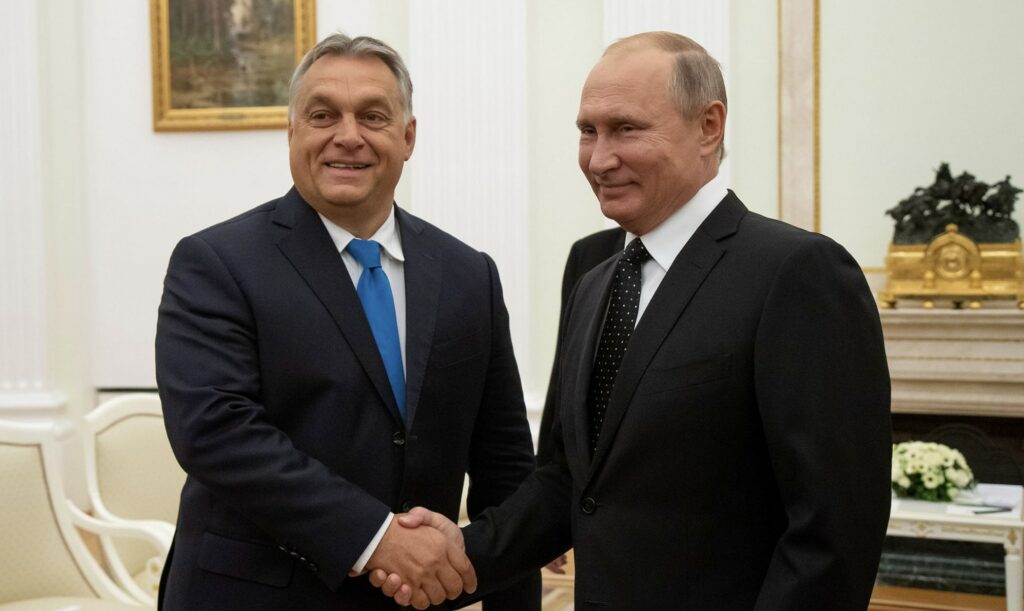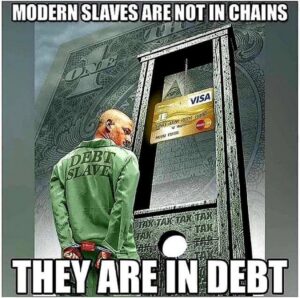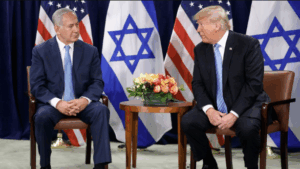Orban makes a daring bet as the West weakens

In an era of shifting global power dynamics, Hungarian Prime Minister Viktor Orban has positioned himself as a maverick leader willing to challenge the prevailing Western order. As the United States and its European allies grapple with internal divisions, economic uncertainties, and a perceived decline in geopolitical influence, Orban is making a calculated gamble: aligning Hungary with alternative powers and asserting a nationalist agenda that defies the liberal democratic consensus. This bold strategy, rooted in pragmatism and defiance, could either secure Hungary’s future or leave it isolated on the world stage.
The West’s Waning Influence
The backdrop to Orban’s maneuverings is a West that appears increasingly fractured. The United States, long the guarantor of NATO’s strength and the liberal international order, has been bogged down by political polarization and a retreat from global leadership under successive administrations. In Europe, the European Union faces its own existential challenges: economic stagnation, the lingering effects of Brexit, and a failure to present a unified front on issues like migration, energy, and defense. The war in Ukraine has further exposed these fault lines, with NATO’s cohesion tested and Europe’s dependence on American military might laid bare.
For Orban, this weakening of Western unity is not a crisis but an opportunity. He has long criticized the EU’s bureaucratic overreach and what he sees as its imposition of progressive values on sovereign nations. Now, with the West distracted and divided, he is doubling down on his vision of an “illiberal democracy”—one that prioritizes national interests, cultural identity, and traditional values over the cosmopolitan ideals championed by Brussels and Washington.
A Pivot to the East
Orban’s daring bet is most evident in his outreach to non-Western powers, particularly Russia and China. While the EU and NATO have sought to isolate Moscow over its invasion of Ukraine, Orban has maintained a pragmatic relationship with Vladimir Putin. Hungary has resisted fully aligning with Western sanctions, securing energy deals with Russia to shield its economy from the fallout of the war. This stance has drawn ire from European peers, who accuse Orban of undermining collective security, but it has also bolstered his domestic image as a leader who puts Hungary first.
Simultaneously, Orban has deepened ties with China, welcoming investment through Beijing’s Belt and Road Initiative. Chinese electric vehicle giant BYD recently announced plans to build a factory in Hungary, a move that underscores Budapest’s growing role as a bridge between East and West. For Orban, these partnerships offer economic leverage and a counterweight to the EU, which has threatened to withhold funds over Hungary’s breaches of democratic norms.
Defiance at Home and Abroad
Domestically, Orban’s bet hinges on his ability to rally Hungarians around a narrative of sovereignty and resilience. His Fidesz party has consolidated power over the past decade, reshaping the judiciary, media, and electoral system to entrench its dominance. Critics decry this as authoritarianism, but Orban frames it as a necessary bulwark against a decaying West. Policies targeting migrants, LGBTQ+ rights, and foreign NGOs have cemented his appeal among conservative voters, even as they provoke legal battles with the EU.
On the international stage, Orban has cast himself as a champion of a multipolar world, where smaller nations like Hungary can carve out their own paths rather than bowing to superpower dictates. His speeches often blend historical grievance—invoking Hungary’s subjugation under empires—with a forward-looking call to resist Western “cultural colonization.” This rhetoric resonates beyond Hungary, inspiring like-minded leaders in Poland, Italy, and even parts of the American right.
Risks and Rewards
Yet Orban’s gamble is not without peril. By cozying up to Russia and China, he risks alienating Hungary’s traditional allies at a time when NATO and the EU remain critical for security and economic stability. The EU’s threats to cut funding are not idle; Hungary’s economy, heavily reliant on European markets, could suffer if Brussels follows through. Moreover, Orban’s defiance may embolden domestic opposition, which, though fragmented, has shown signs of coalescing around frustration with corruption and democratic backsliding.
The rewards, however, could be substantial. If the West continues to falter—whether through a prolonged Ukraine conflict, a second Trump presidency, or further EU disarray—Orban’s early pivot to alternative powers could position Hungary as a regional linchpin. His model of illiberal governance might even gain traction elsewhere, reshaping the political landscape of Central and Eastern Europe.
A High-Stakes Game
Viktor Orban’s daring bet reflects a keen reading of the times: a West in decline, a rising East, and a global order in flux. Whether this strategy succeeds or falters will depend on his ability to navigate the treacherous waters of geopolitics while maintaining control at home. For now, he stands as a provocateur, testing the limits of Western resolve and betting that history will vindicate his unorthodox path. As the world watches, Hungary’s leader is playing a high-stakes game—one that could redefine his nation’s place in a rapidly changing world.
Comparing the Strategies of Viktor Orban and Vladimir Putin
Viktor Orban, Hungary’s Prime Minister, and Vladimir Putin, Russia’s President, are two leaders often cited as exemplars of modern authoritarianism, yet their strategies—while sharing some common threads—diverge significantly in scope, scale, and execution. Both have capitalized on a perceived decline in Western influence to advance their agendas, but their approaches reflect the distinct contexts of their nations: Orban operates within the constraints of a small EU member state, while Putin wields the might of a former superpower with global ambitions. Here’s a comparative analysis of their strategies.
1. Centralization of Power
Orban: Orban’s strategy hinges on consolidating power within Hungary’s democratic framework. Since his Fidesz party’s rise in 2010, he has systematically reshaped institutions—stacking courts, rewriting the constitution, and controlling media—to entrench his rule. His approach is incremental and legalistic, leveraging Hungary’s EU membership to maintain legitimacy while eroding democratic checks. Orban frames this as “illiberal democracy,” a system that prioritizes national sovereignty and traditional values over Western liberalism.
Putin: Putin’s power grab has been more overt and forceful. After assuming leadership in 2000, he dismantled Russia’s nascent democratic experiment, centralizing authority through a mix of coercion, propaganda, and elimination of rivals. Oligarchs were tamed, opposition figures silenced (often violently), and elections rigged to ensure his dominance. Unlike Orban, Putin operates outside Western institutional constraints, relying on a “vertical of power” that fuses state, security services, and personal loyalty.
Comparison: Both leaders prioritize control, but Orban’s strategy is subtler, cloaked in democratic trappings to avoid outright EU expulsion, while Putin’s is unapologetically autocratic, reflecting Russia’s lack of external accountability.
2. Geopolitical Maneuvering
Orban: Orban’s foreign policy is a delicate balancing act. He exploits the West’s weakening cohesion—evident in NATO’s Ukraine divisions and EU infighting—to assert Hungary’s autonomy. His outreach to Russia and China (e.g., energy deals with Moscow and Chinese investments) serves as a hedge against EU pressure, positioning Hungary as a pragmatic player in a multipolar world. Yet he remains tethered to Western alliances for economic and security benefits, avoiding a full break.
Putin: Putin’s strategy is far more aggressive, aiming to restore Russia as a global power. He views the West’s decline as an existential opportunity, using military force (e.g., Ukraine, Syria) and hybrid warfare (e.g., disinformation, energy coercion) to destabilize rivals and reassert influence over the post-Soviet sphere. His pivot to China and other non-Western powers is less about economic pragmatism than creating an anti-Western bloc to counter NATO and the U.S.
Comparison: Orban plays a defensive game, seeking leverage within a constrained environment, while Putin plays offense, projecting power to reshape the global order. Orban’s bets are opportunistic; Putin’s are revisionist.
3. Nationalism and Identity
Orban: Orban’s ideology centers on cultural nationalism, casting Hungary as a bastion of Christian values against a decadent, multicultural West. Policies targeting migrants, LGBTQ+ rights, and “foreign agents” rally his base and justify his illiberal turn. His rhetoric often invokes Hungary’s historical victimhood under empires, positioning him as a defender of sovereignty in a globalized age.
Putin: Putin’s nationalism is imperial and militaristic, rooted in the mythos of Russia’s greatness. He portrays the West as a moral and strategic threat, promoting a “Russian world” that blends Orthodox Christianity, Slavic unity, and Soviet nostalgia. This narrative legitimizes territorial ambitions (e.g., Crimea) and domestic repression, framing dissent as betrayal of the motherland.
Comparison: Both exploit identity to consolidate power, but Orban’s nationalism is inward-looking, focused on cultural preservation, while Putin’s is expansive, tied to territorial and historical restoration.
4. Economic Leverage
Orban: Orban uses Hungary’s economy as a tool for survival. EU funds have long propped up his regime, but as Brussels threatens to cut them over democratic violations, he’s turned to Russia for energy and China for investment (e.g., the BYD factory). This diversification reduces dependence on the West without fully severing ties, maintaining flexibility in a small, trade-reliant nation.
Putin: Putin wields Russia’s vast energy resources and military-industrial complex as geopolitical weapons. Sanctions since 2014 have forced economic resilience through state control and partnerships with China, India, and others. His strategy sacrifices long-term growth for short-term leverage, using oil and gas to coerce neighbors and fund his ambitions.
Comparison: Orban’s economic strategy is adaptive, balancing East and West, while Putin’s is extractive, prioritizing strategic dominance over sustainable development.
5. Handling Opposition
Orban: Orban neutralizes opposition through legal and electoral manipulation rather than outright violence. Independent media are bought out or marginalized, and civil society is stifled by restrictive laws. Protests occur but are contained, and his control of rural voter bases ensures electoral victories despite urban dissent.
Putin: Putin’s approach is ruthless—opponents like Alexei Navalny face imprisonment or death, and dissent is crushed by the FSB and police. Propaganda via state media drowns out alternative voices, and elections are stage-managed to eliminate real threats.
Comparison: Orban’s repression is sophisticated and systemic, avoiding the brutality that defines Putin’s crackdowns, reflecting Hungary’s smaller scale and EU oversight.
Risks and Outcomes
Orban: His strategy risks EU retaliation (e.g., fund cuts) and domestic unrest if economic conditions worsen. Success depends on the West’s continued disarray and his ability to sustain nationalist fervor without overreaching.
Putin: Putin’s risks are higher—military overextension (e.g., Ukraine), economic isolation, and potential internal instability if losses mount. His success hinges on outlasting Western resolve and maintaining domestic fear and loyalty.
Conclusion
Orban and Putin share a disdain for Western liberalism and a knack for exploiting its weaknesses, but their strategies reflect their contexts. Orban’s is a tightrope walk—pragmatic, constrained, and focused on Hungary’s survival. Putin’s is a bulldozer—bold, confrontational, and aimed at reasserting Russia’s dominance. Both are betting on a fracturing West, but while Orban seeks to thrive in the cracks, Putin aims to widen them. Their fates may well signal whether the future favors cunning opportunists or resolute strongmen.




